For more information and search capabilities visit: Lessons Main Index Page
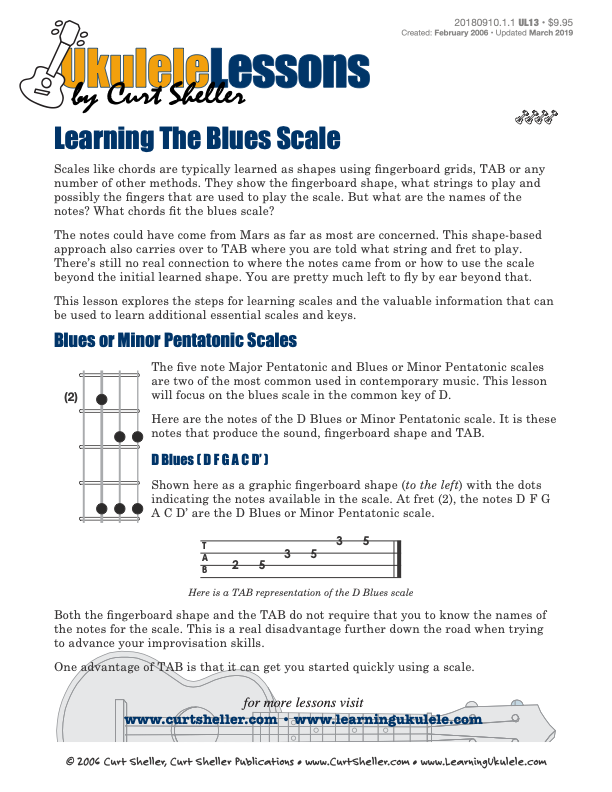
Learn the Blues ( Minor Pentatonic ) and Pentatonic ( Major Pentatonic ) scales on ukulele. A practical approach to learning theses two essential scales using the Blues. These five note scales, the Major Pentatonic and the Blues or Minor Pentatonic scales are two of the most common scales used in contemporary music.
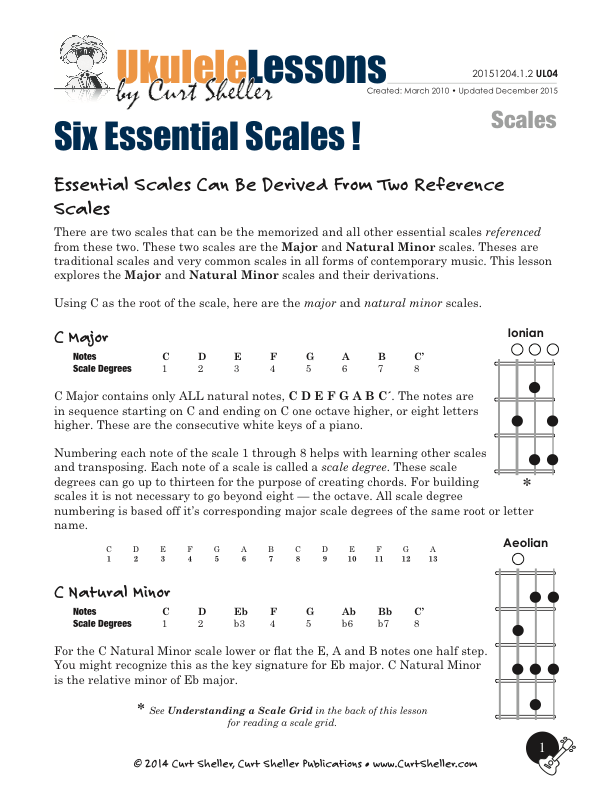
The six essential scales are: Blues Major Pentatonic Mixolydian Dorian Aeolian and Ionian From the six essential scales, you can get through a wide variety of traditional and contemporary music. A scale is simply a collection of pitches or notes, not really a "this is a Jazz scale", "this is a Blues" or "this is a Rock scale". It's how a scale is used that really matters not its name.
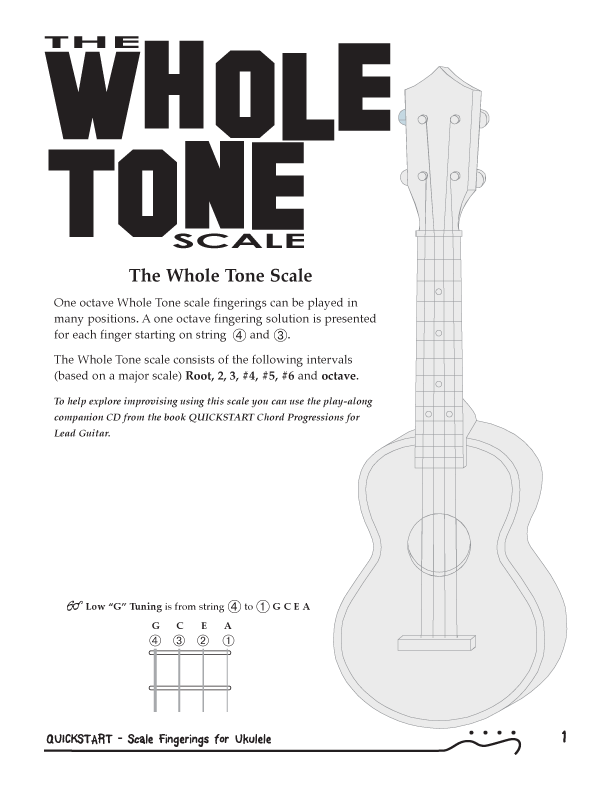
The "Whole Tone scale" is a symmetrical scale with an equal distance been each note or scale degree.
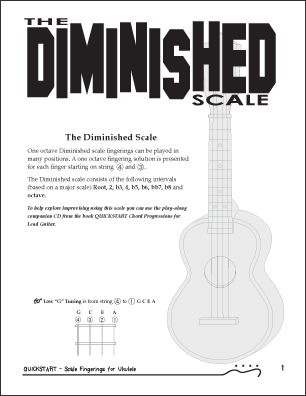
The "Diminished Scale" is a symmetrical scale with a repeating pattern of whole steps and half steps. You only need three Diminished scales to cover all 15 keys.
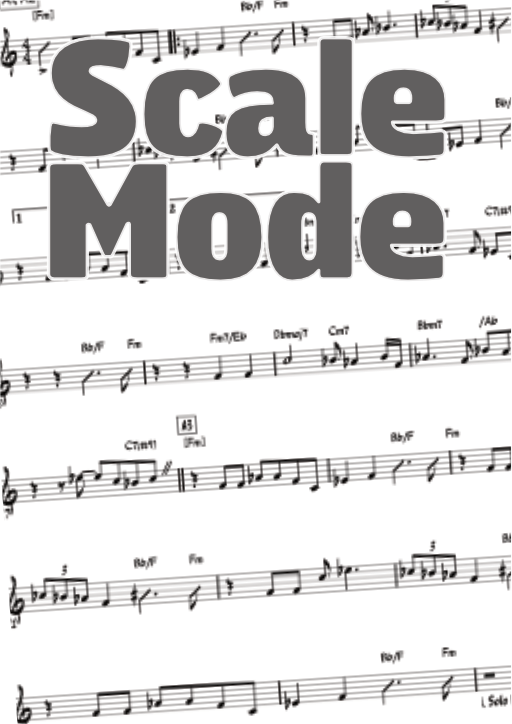
The terms "scale" and "mode" are often used interchangeably, but strictly speaking, there is a significant difference between them in music theory. Although they may share the same set of notes, a scale and a mode or modal scale are not the same thing. It's important to note that a scale and a mode can contain the same notes.
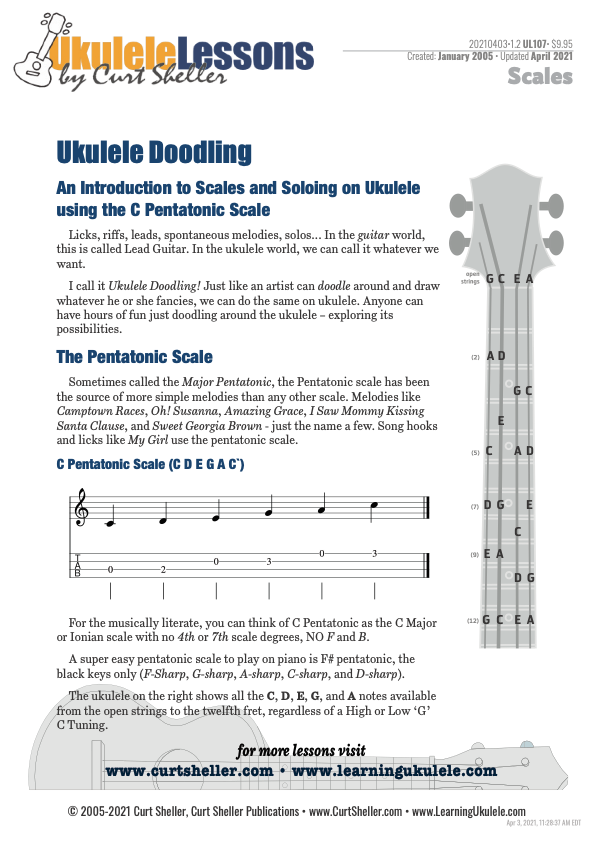
An "Introduction to Scales and Soloing on Ukulele" using the C Pentatonic Scale. Taking what you might already know and using it in different ways. Exploring the entire ukulele fingerboard have hours of fun just doodling around and exploring the ukulele's possibilities.
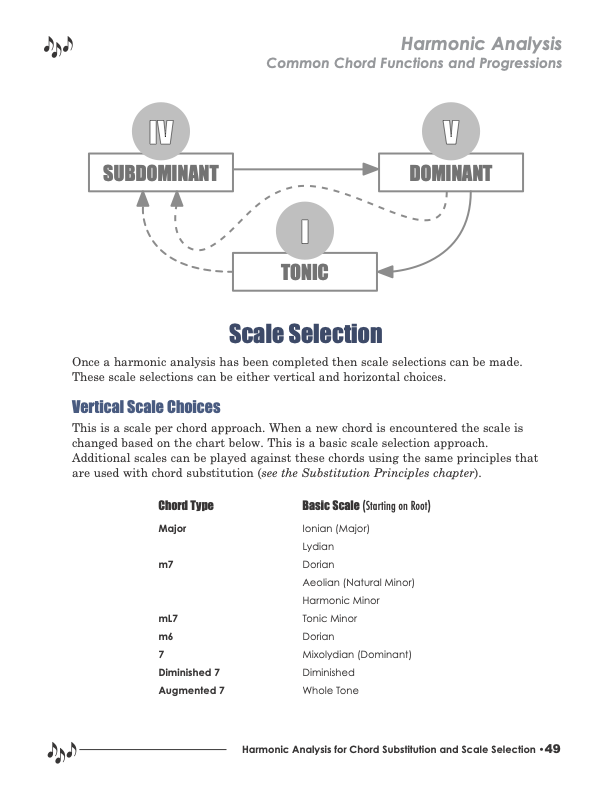
A Harmonic Analysis is then used to make vertical and horizontal scale selection for improvisation and chord substitution.
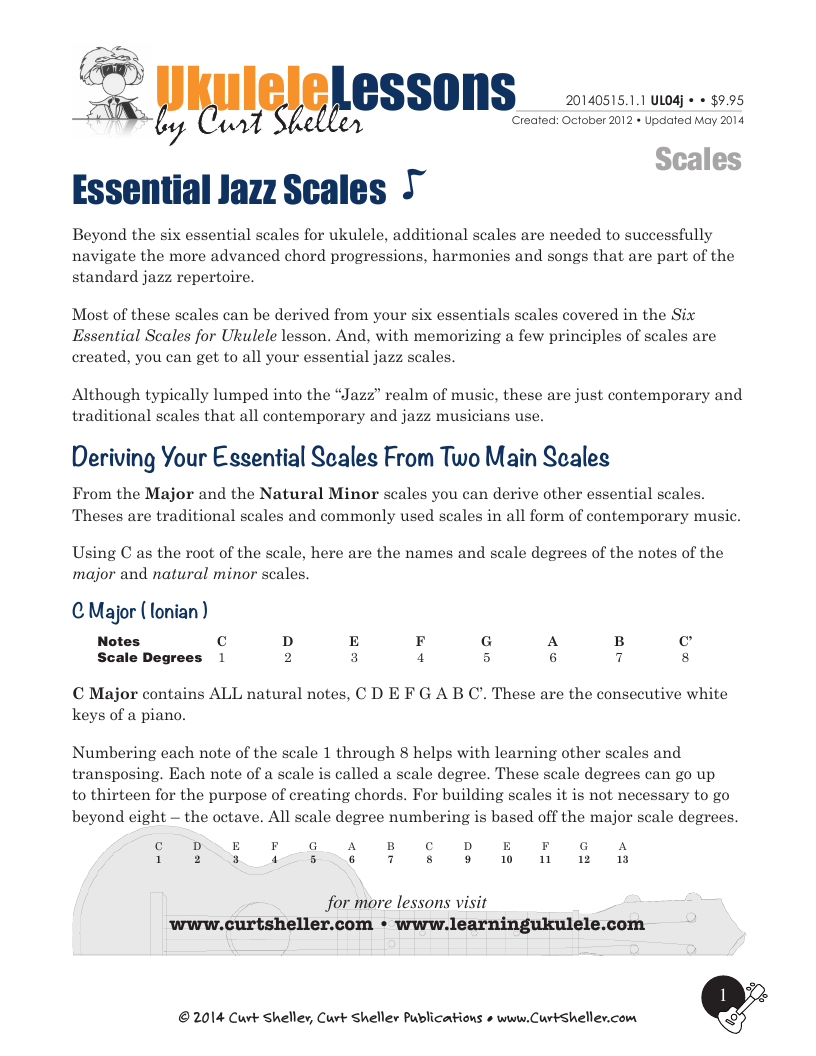
After you mastering the six essentials scales below and start to explore more advanced styles of music, especially jazz. There are a few more scales that are needed to cover the broader harmonic palette that a typical jazz tune draws from.
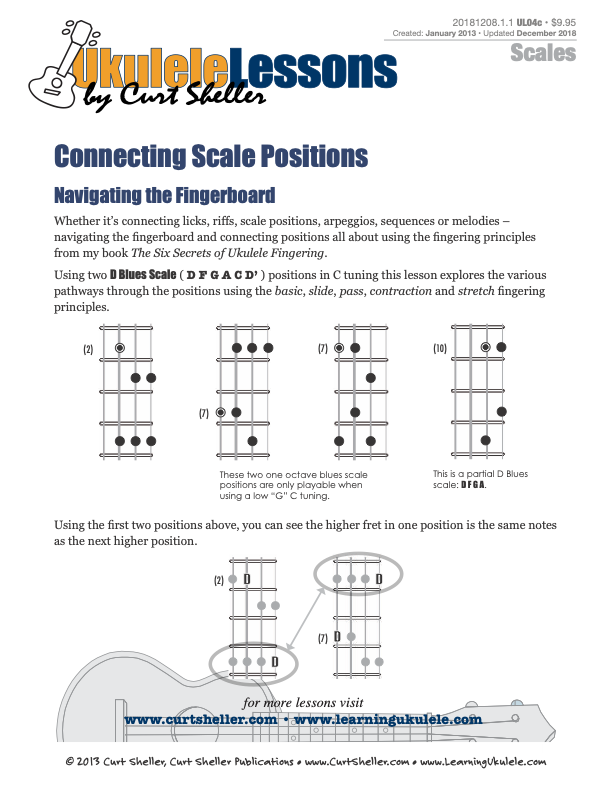
Whether it’s connecting licks, riffs, scale positions, arpeggios, sequences or melodies – navigating the fingerboard and connecting the various positions - it’s all about using sound fingering principles. I’ve adapted Chuck Anderson's, The Six Secrets of Guitar Fingering to the ukulele in my book The Six Secrets of Ukulele Fingering. It’s from these six fingering principles that connecting positions and navigating the multitude of possible pathways on the ukulele can become second nature.
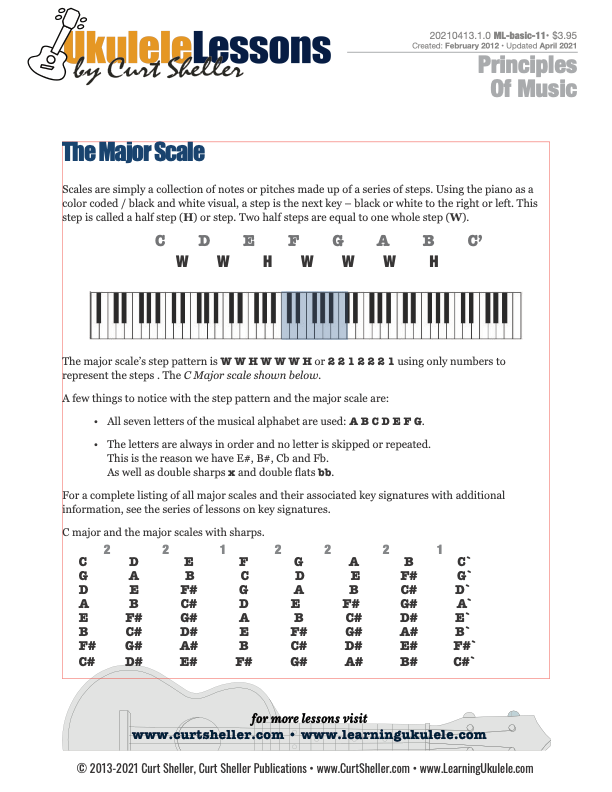
Called the "learning scale" for a reason. The major scale is a great scale for learning how music and chords work. It’s a core scale from which a majority of your core, essential scales can be derived. There are 15 major scales.
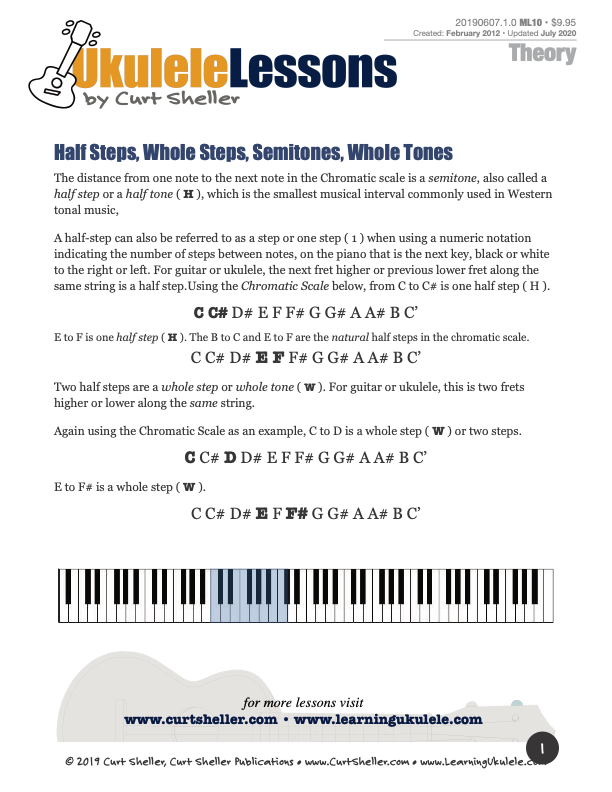
The distance between any two notes can be defined by steps - half steps, whole steps, semi-tones, whole tones. From this series of steps you can get the names of the notes of ANY of the fifteen major scales.
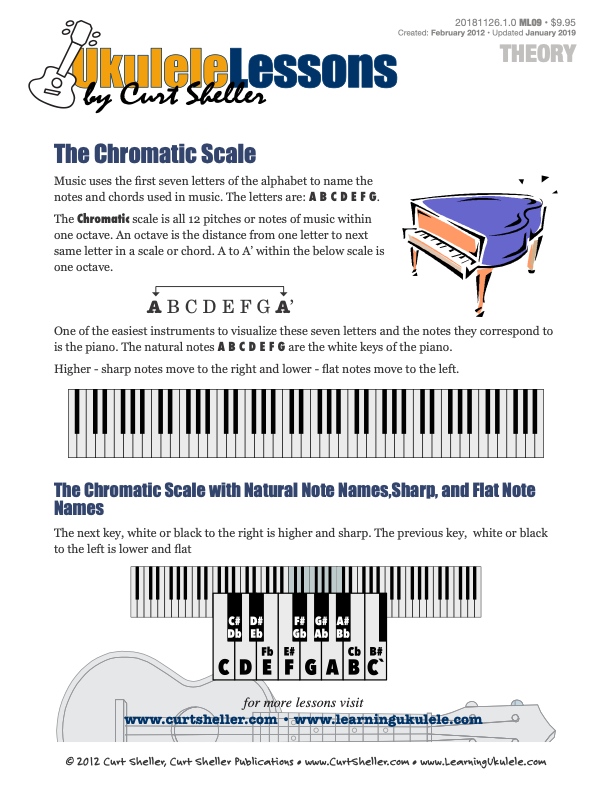
The only scale in music with ALL twelve notes of one octave. Not much use for improvisation or solos – but a great scale for learning the notes of the ukulele fingerboard, figuring out scales, chords and more...
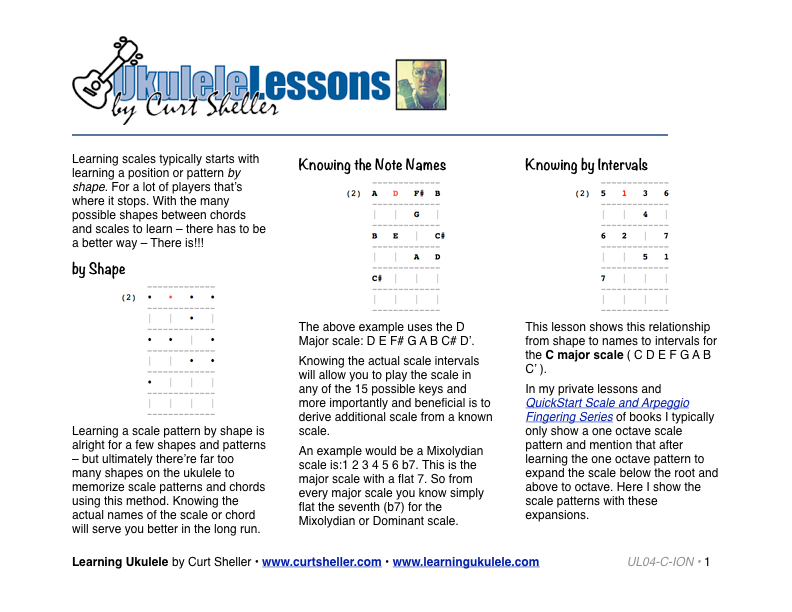
Essential C Major scale patterns for ukulele. Learning scales typically starts with learning a position or pattern by shape. For a lot of players that‘s where it stops. With the many possible shapes between chords and scales to learn - there has to be a better way - There is!!!
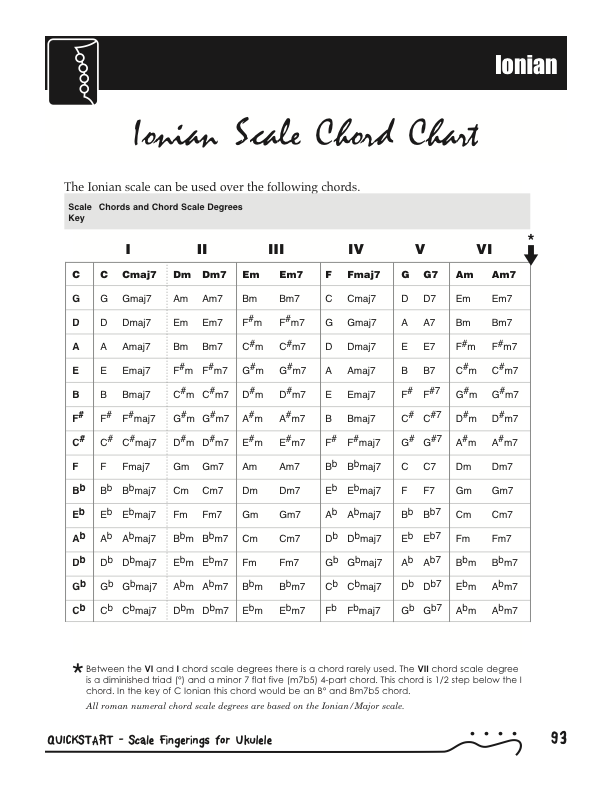
The Ionian/Major scale is one of the six essential scales that every ukulele player should know. Here are the chords for all 15 Ionian/Major scales. From the Ionian/Major scale all other diatonic and pentatonic scales can be derived.
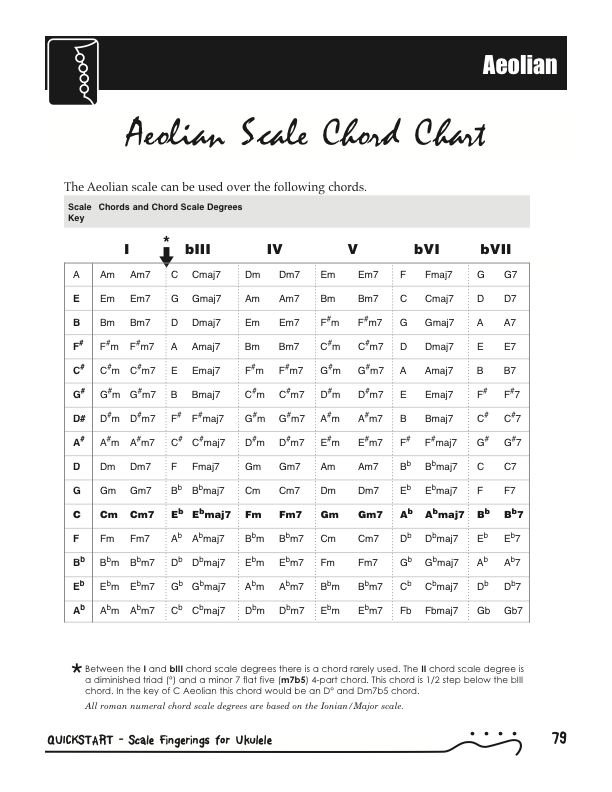
The Aeolian/Natural Minor scale is one of the six essential scales that every ukulele player should know. The scale formula, based on the major scale is: 1 2 b3 5 b6 b7 8.
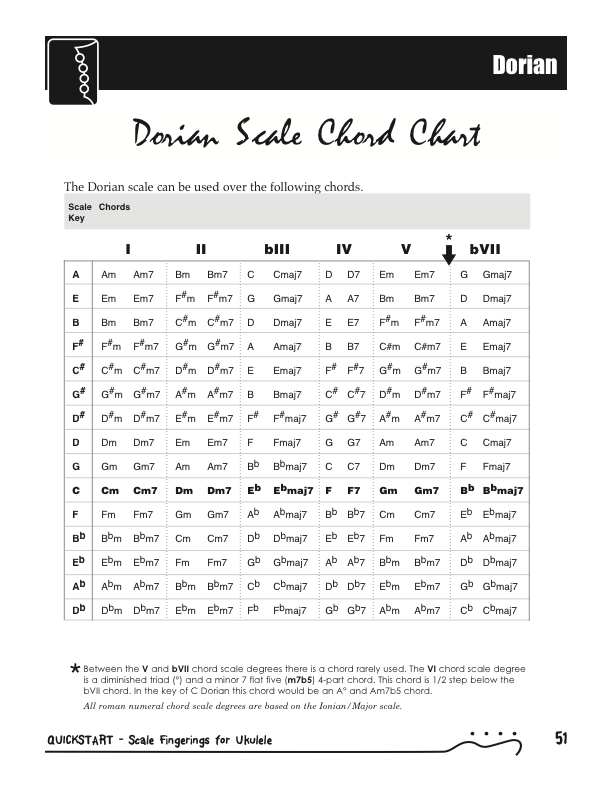
The Dorian/Minor scale is one of the six essential scales that every ukulele player should know. The scale formula, based on the major scale is: 1 2 b3 5 6 b7 8.
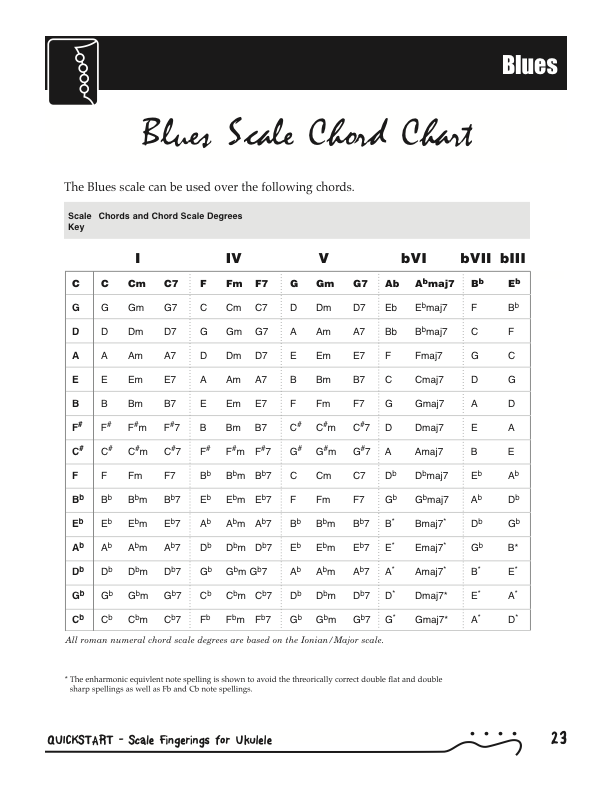
The Blues/MInor Pentatonic scale is one of the six essential scales that every ukulele player should know. Here are the chords for all 15 Pentatonic/Major Pentatonic scales.
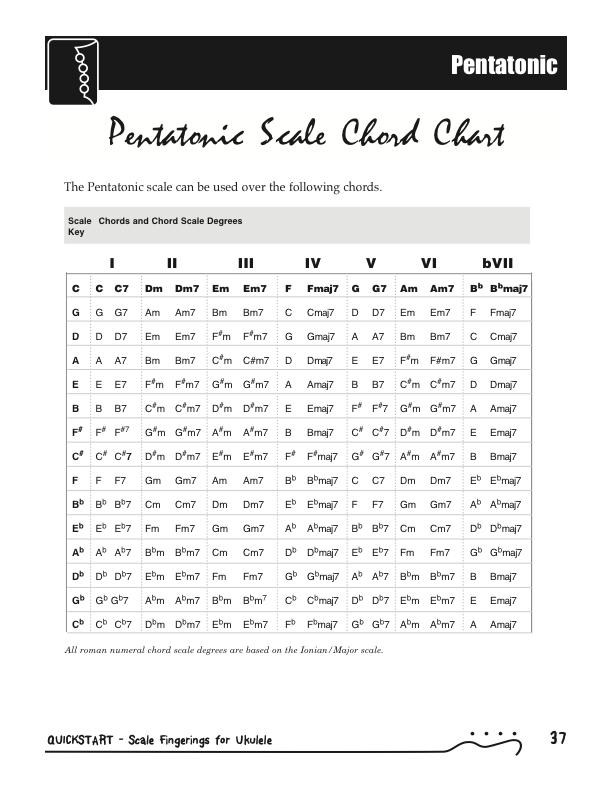
The Pentatonic/Major Pentatonic scale is one of the six essential scales that every ukulele player should know. Here are the chords for all 15 Pentatonic/Major Pentatonic scales.
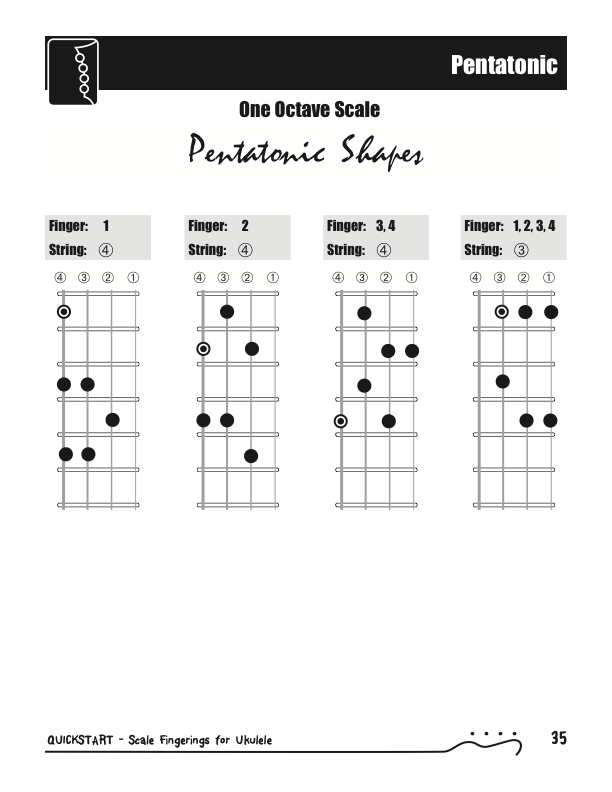
QuickStart scale shapes summary for Pentatonic/Major Pentatonic, one of the six essential scales that every ukulele player should know. The scale formula for this scale, based on the major scale is: 1 2 3 5 6 8`.
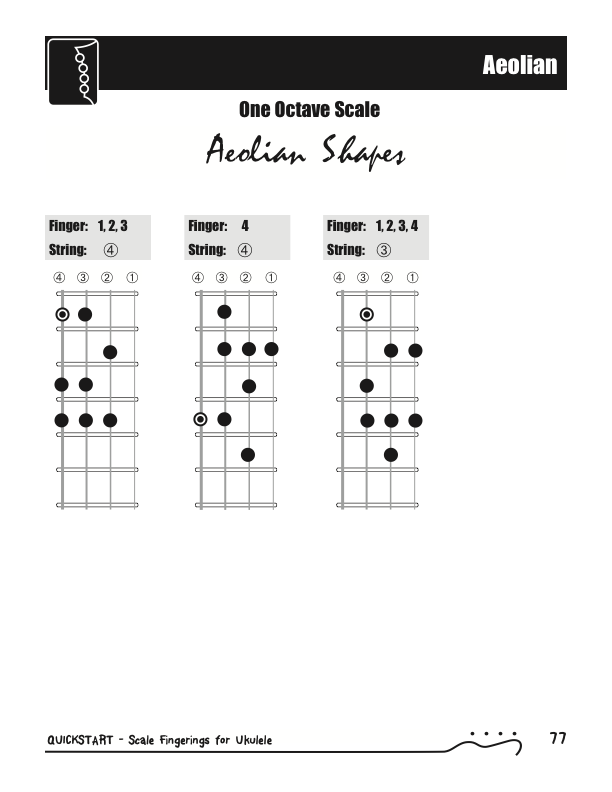
QuickStart scale shapes summary for "Aeolian/Natural Minor", one of the six essential scales that every ukulele player should know. The scale formula for this scale, based on the major scale is: 1 2 b3 4 5 b6 b7 8´.
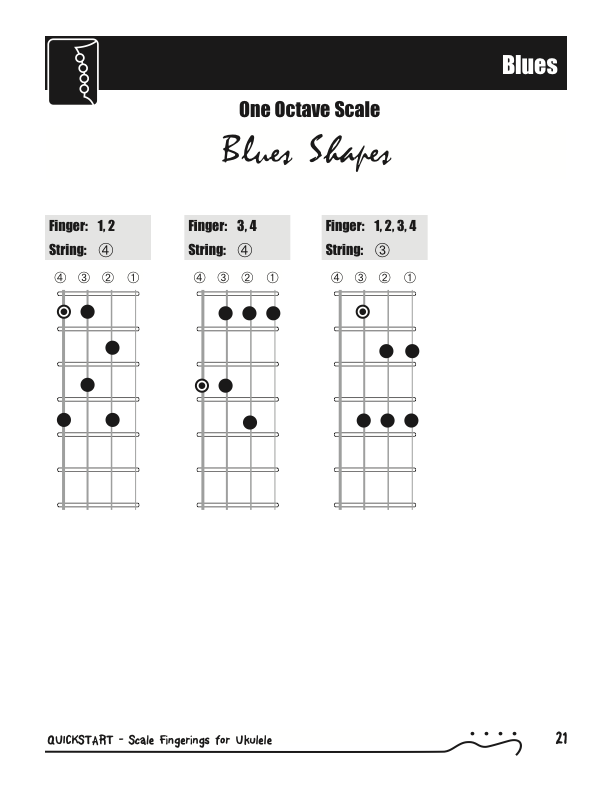
QuickStart scale shapes summary for Blues/Minor Pentatonic, one of the six essential scales that every ukulele player should know.
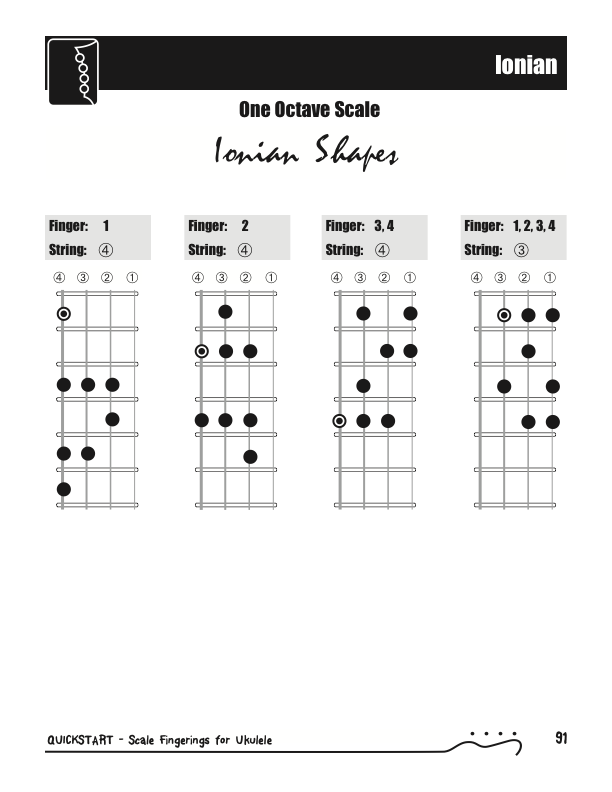
QuickStart scale shapes summary for Ionian/Major, one of the six essential scales that every ukulele player should know.
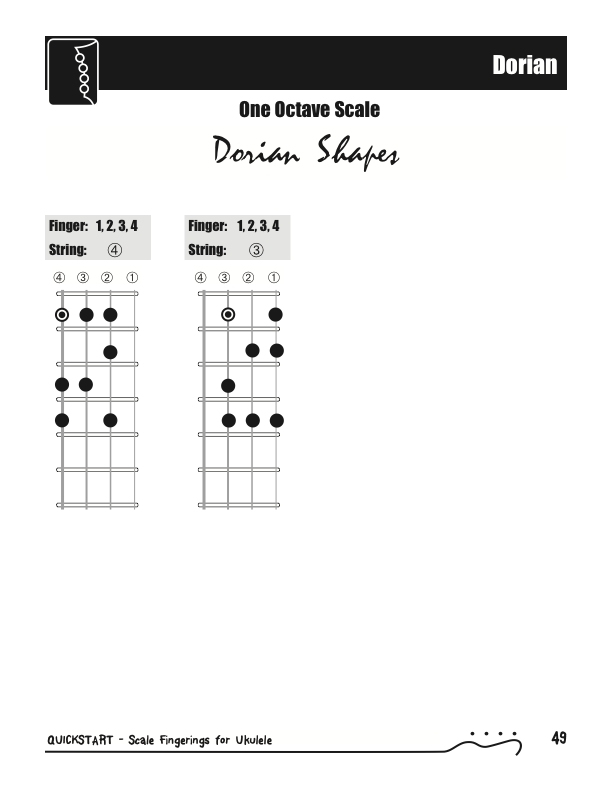
QuickStart scale shapes summary for Dorian/Minor, one of the six essential scales that every ukulele player should know.
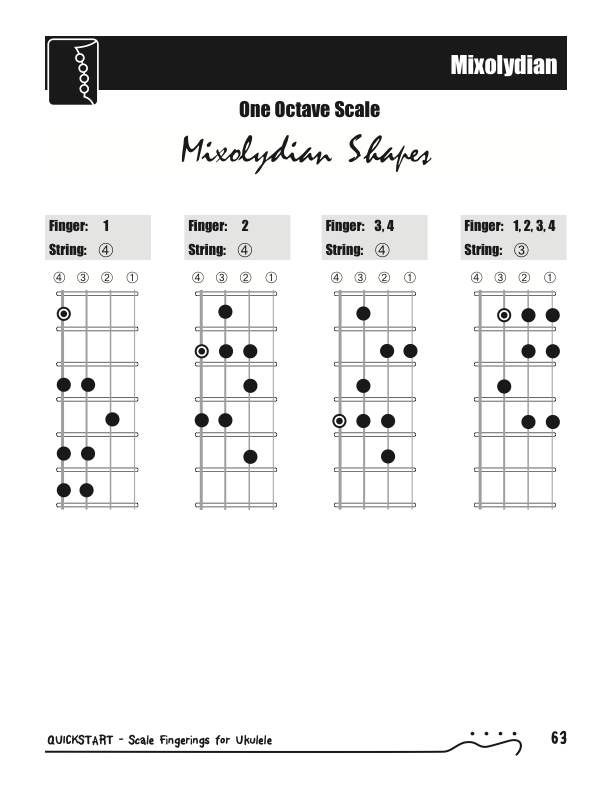
QuickStart scale shapes summary for "Mixolydian/Dominant", one of the six essential scales that every ukulele player should know.
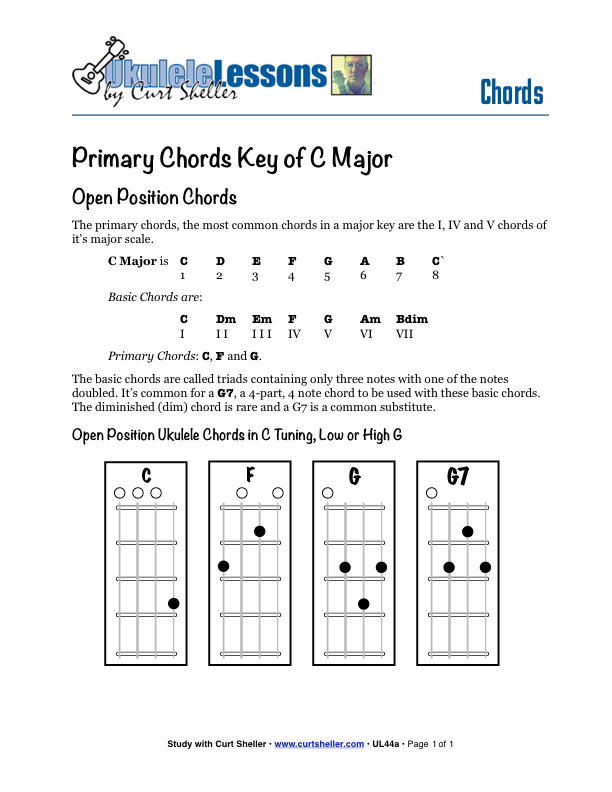
The primary chords for any major key are the I, IV and V chords of its corresponding major scale. For C Major, the primary chords are: C, F, G, and G7. From the primary and secondary chords of a major key, countless songs and chords progressions can be played.
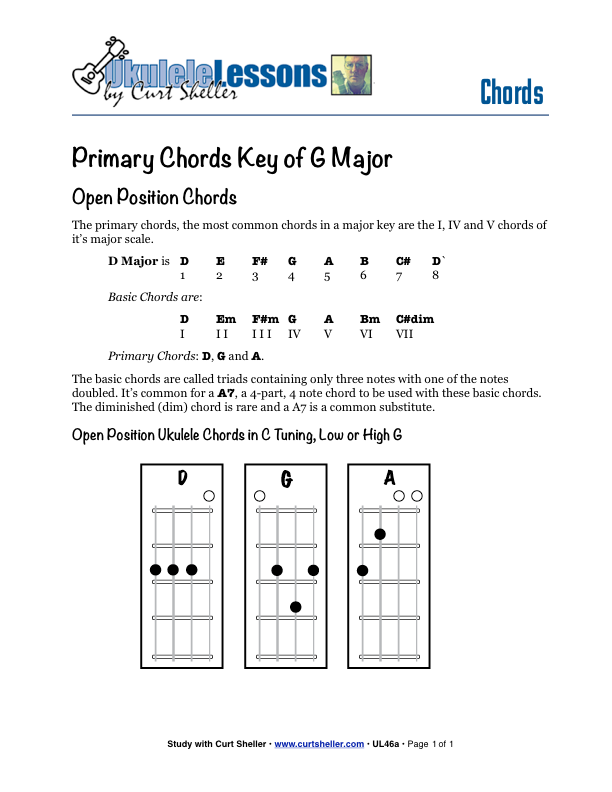
The primary chords for any major key are the I, IV, and V chords of its corresponding major scale. For D Major, the primary chords are: D, G, A, and A7. From the primary and secondary chords of a major key, countless songs and chords progressions can be played.
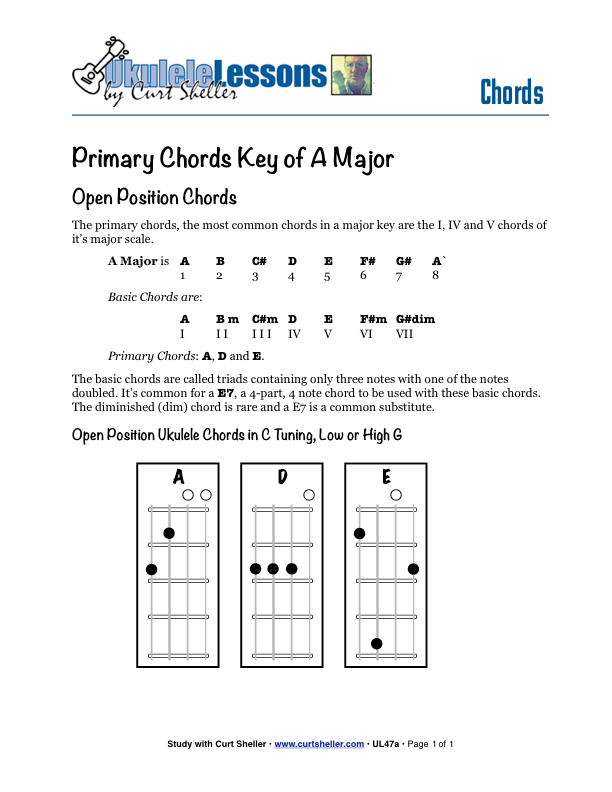
The primary chords for any major key are the I, IV and V chords of its corresponding major scale. For A Major, the primary chords are: A, D, E and E7. From the primary and secondary chords of a major key, countless songs and chords progressions can be played.
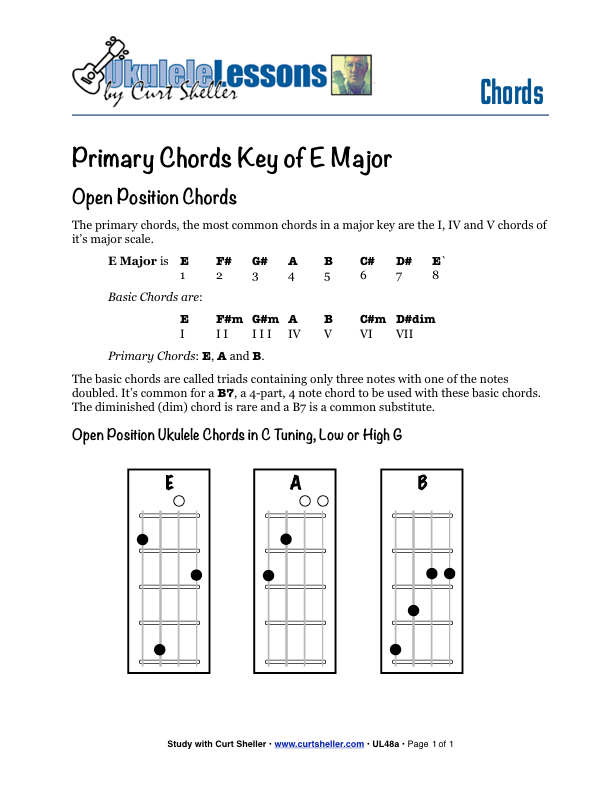
The primary chords for any major key are the I, IV and V chords of its corresponding major scale. For E Major the primary chords are: E, A, B and B7. From the primary and secondary chords of a major key, countless songs and chords progressions can be played.
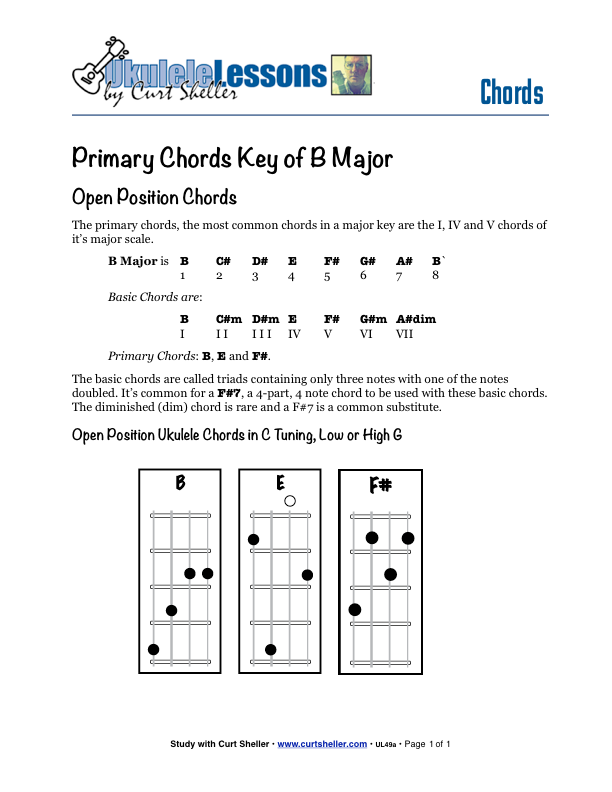
The primary chords for any major key are the I, IV and V chords of its corresponding major scale. For B Major, the primary chords are: B, E, F# and F#7. From these primary chords alone, countless songs and chords progressions can be played.

The primary chords for any major key are the I, IV and V chords of its corresponding major scale. For F# Major the primary chords are: F#, B, C# and C#7. From these primary chords alone countless songs and chords progressions can be played.

The primary chords for any major key are the I, IV and V chords of its corresponding major scale. For C# Major, the primary chords are: C#, F#, G# and G#7. From the primary and secondary chords of a major key, countless songs and chords progressions can be played.
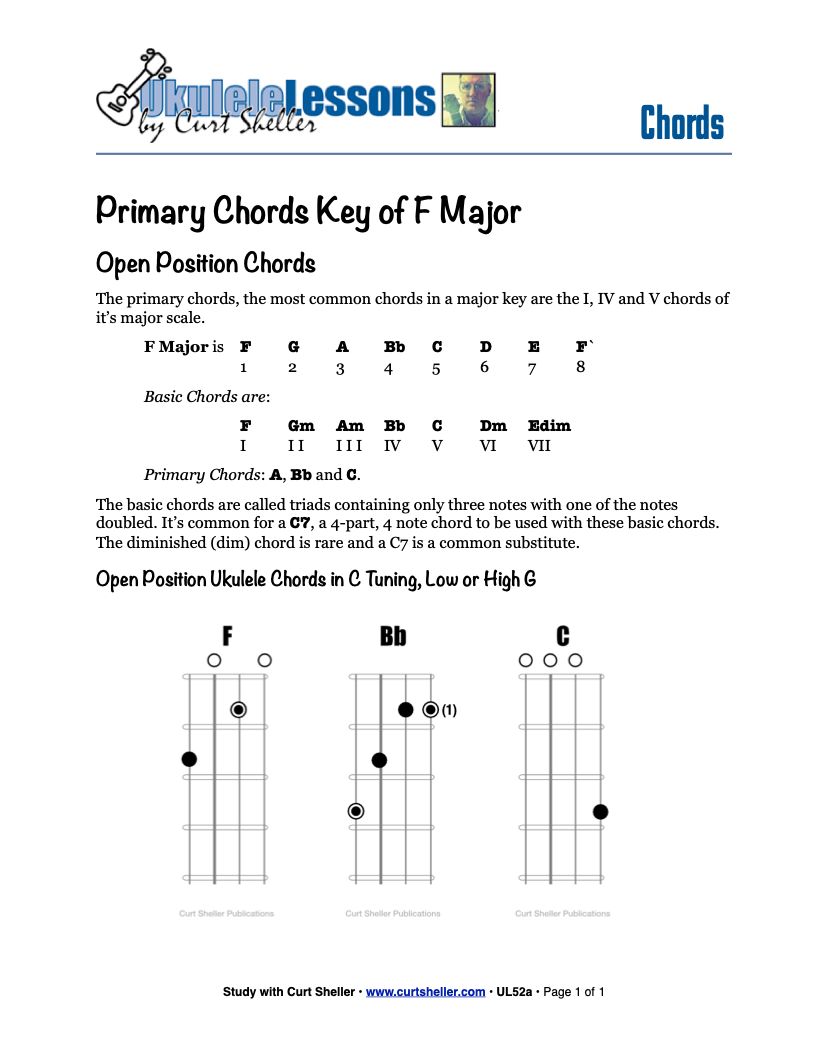
The primary chords for any major key are the I, V and chords of its corresponding major scale. For F Major, the primary chords are: F, Bb, C and C7. From the primary and secondary chords of a major key, countless songs and chords progressions can be played.
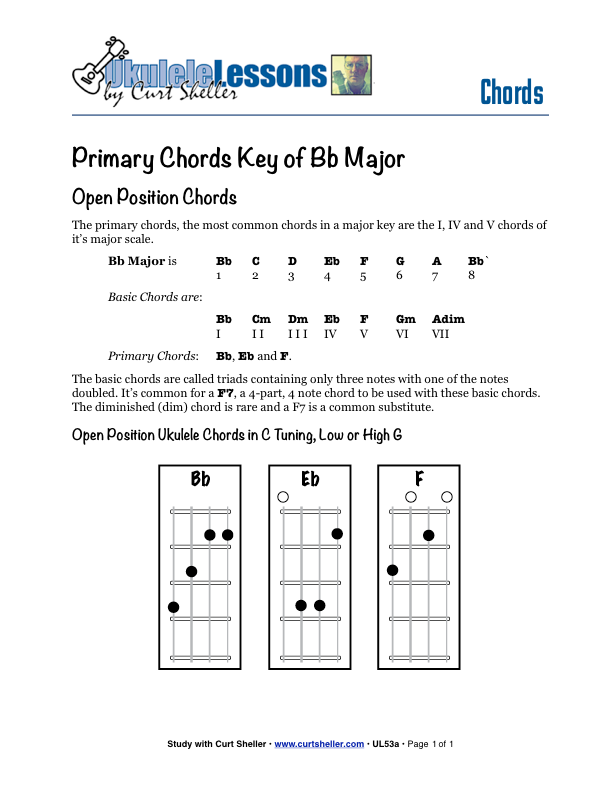
The primary chords for any major key are the I, IV and V chords of its corresponding major scale. For Bb Major, the primary chords are: Bb, Eb, F and F7. From the primary and secondary chords of a major key, countless songs and chords progressions can be played.
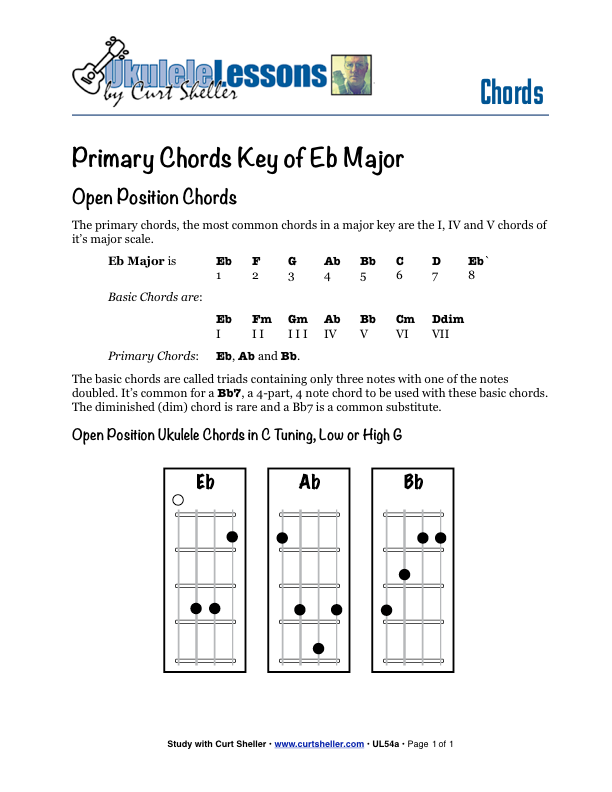
The primary chords for any major key are the I, IV and V chords of its corresponding major scale. For Eb Major, the primary chords are: Eb, Ab, Bb and Bb7. From the primary and secondary chords of a major key, countless songs and chords progressions can be played.

The primary chords for any major key are the I, IV and V chords of its corresponding major scale. For Ab Major, the primary chords are: Ab, Db, Eb and Eb7. From the primary and secondary chords of a major key, countless songs and chords progressions can be played.

The primary chords for any major key are the I, IV and V chords of its corresponding major scale. For Db Major' the primary chords are: Db, Gb, Ab and Ab7. From the primary and secondary chords of a major key' countless songs and chords progressions can be played.

The primary chords for any major key are the I, IV and V chords of its corresponding major scale. For Gb Major, the primary chords are: Gb, Cb, Db and Db7. From the primary and secondary chords of a major key, countless songs and chords progressions can be played.

The primary chords for any major key are the I, IV and V chords of its corresponding major scale. For Cb Major, the primary chords are: Cb, Fb, Gb and Gb7. From the primary and secondary chords of a major key, countless songs and chords progressions can be played.
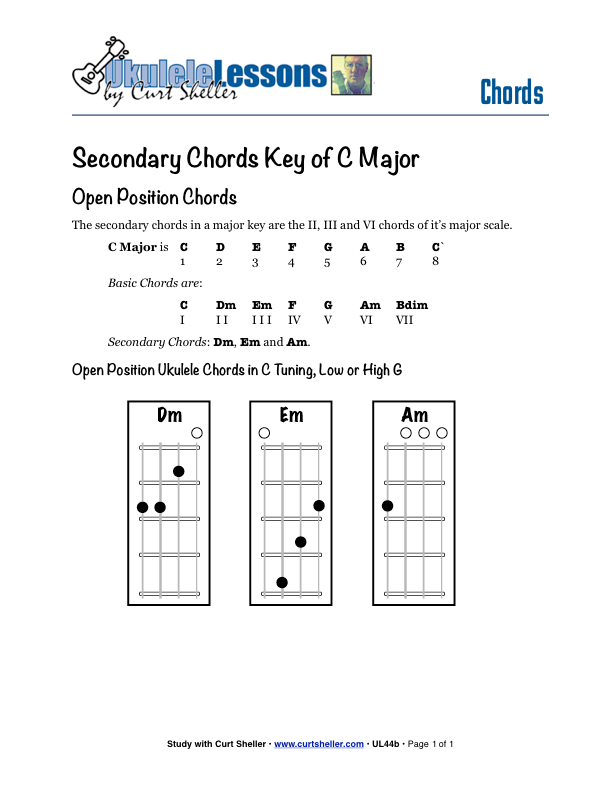
The secondary chords for any major key are the II, III and VI chords of it's corresponding major scale. For C Major, the secondary chords are: Dm, Em and Am. From the primary and secondary chords of a major key, countless songs and chords progressions can be played.
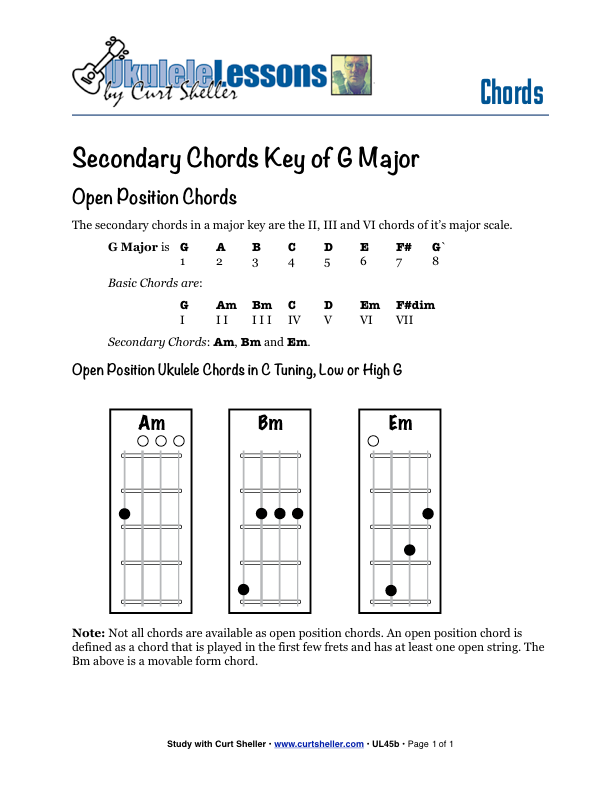
The secondary chords for any major key are the II, III and VI chords of it’s corresponding major scale. For G Major the secondary chords are: Am, Bm and Em. From the primary and secondary chords of a major key countless songs and chords progressions can be played.
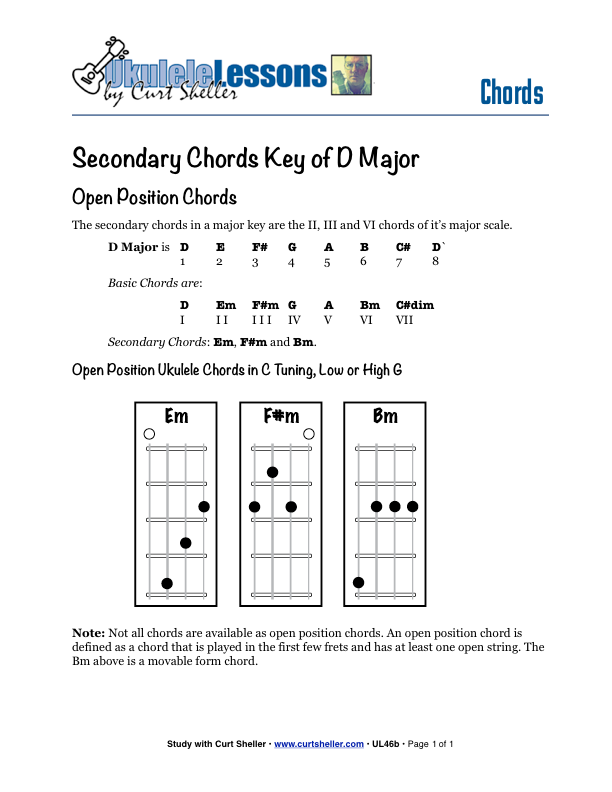
The secondary chords for any major key are the II, III and VI chords of its corresponding major scale. For D Major the secondary chords are: Em, F#m and Bm. From the primary and secondary chords of a major key countless songs and chords progressions can be played. This lesson covers the basic open position chords for D Major.
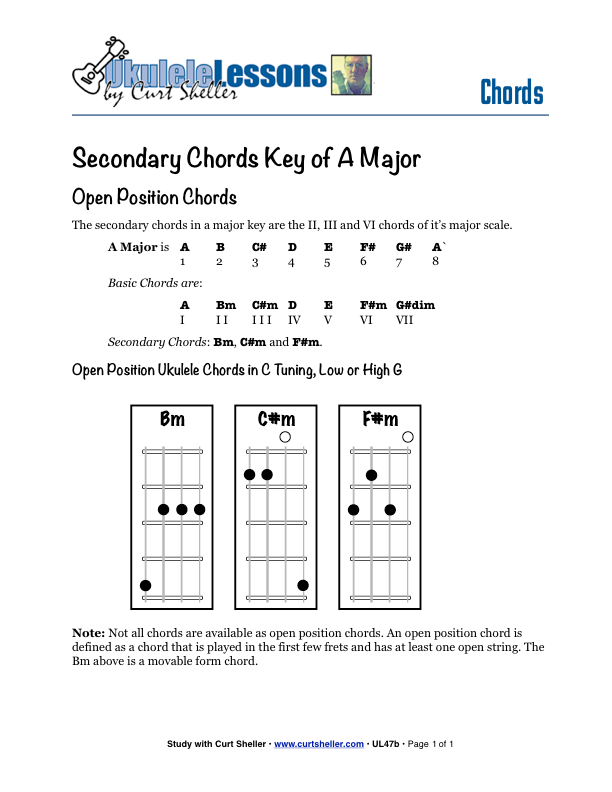
The secondary chords for any major key are the II, III and VI chords of its corresponding major scale. For A Major the secondary chords are: Bm, C#m and F#m.
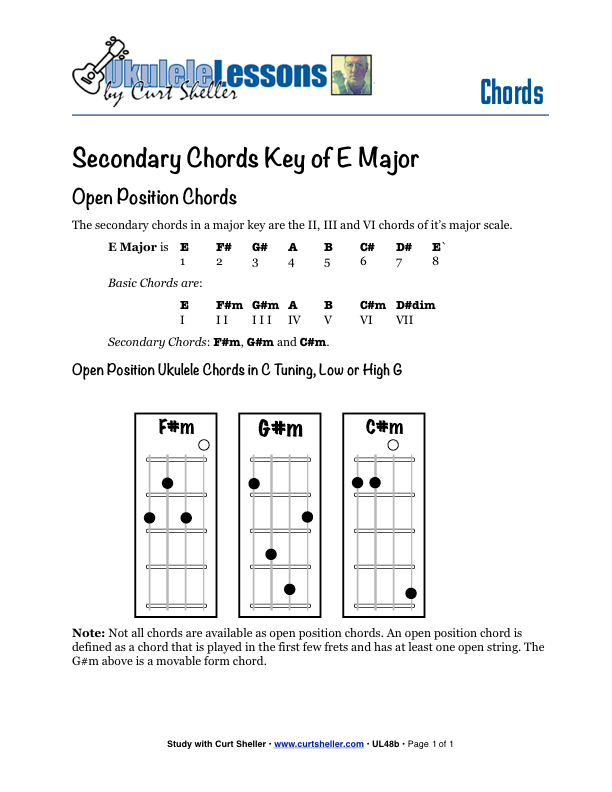
The secondary chords for any major key are the II, III and VI chords of its corresponding major scale. For E Major the secondary chords are: F#m, G#m and C#m. From the primary and secondary chords of a major key, countless songs and chords progressions can be played.
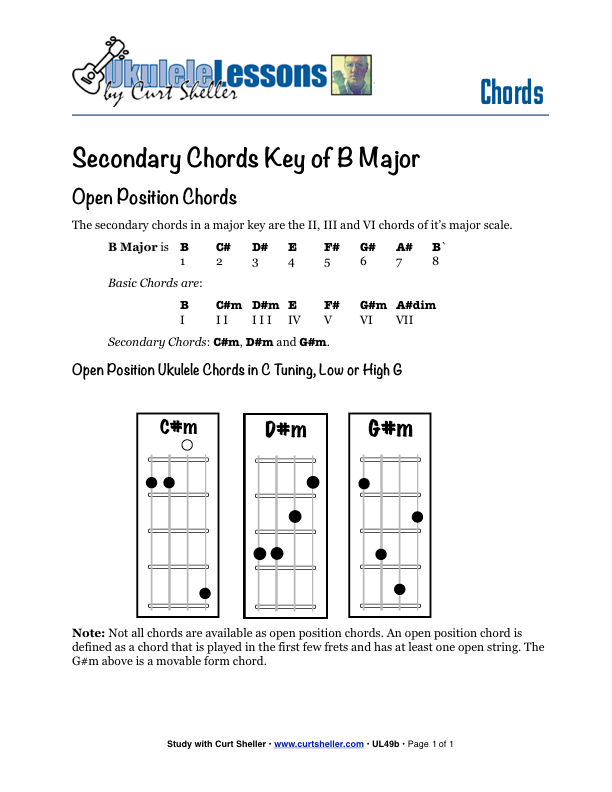
The secondary chords for any major key are the II, III and VI chords of its corresponding major scale. For B Major, the secondary chords are: C#m, D#m and G#m. From the primary and secondary chords of a major key, countless songs and chords progressions can be played.

The secondary chords for any major key are the II, III and VI chords of it's corresponding major scale. For F# Major, the secondary chords are: G#m, A#m and D#m. From the primary and secondary chords of a major key, countless songs and chords progressions can be played.

The secondary chords for any major key are the II, III and VI chords of its corresponding major scale. For C# Major, the secondary chords are: D#m, E#m and A#m. From the primary and secondary chords of a major key, countless songs and chords progressions can be played.
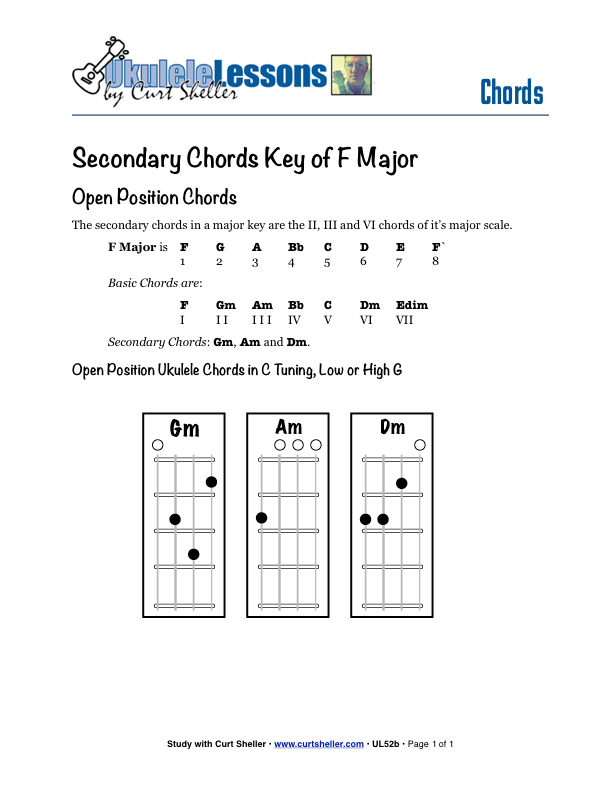
The secondary chords for any major key are the II, III and VI chords of it's corresponding major scale. For F Major, the secondary chords are: Gm, Am and Dm. From the primary and secondary chords of a major key, countless songs and chords progressions can be played.
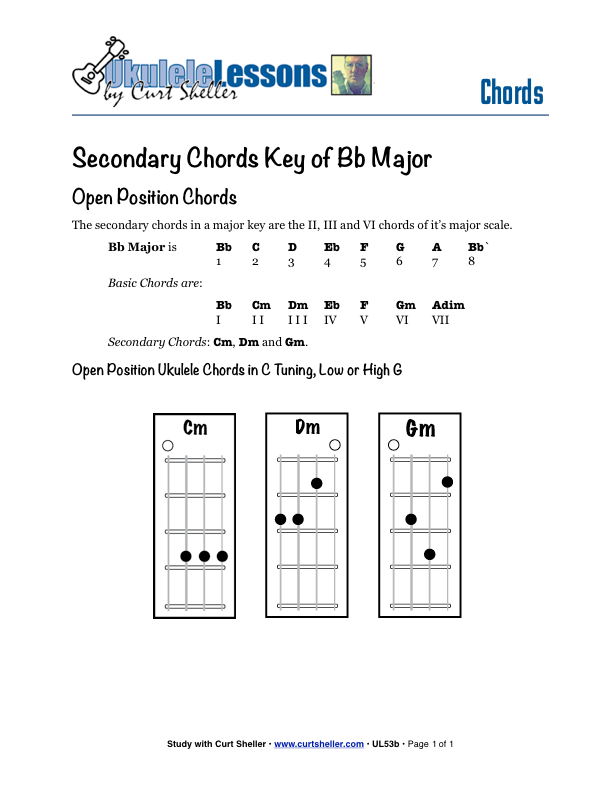
The secondary chords for any major key are the II, III and VI chords of it's corresponding major scale. For Bb Major the secondary chords are: Cm, Dm and Gm, From the primary and secondary chords of a major key countless songs and chords progressions can be played.
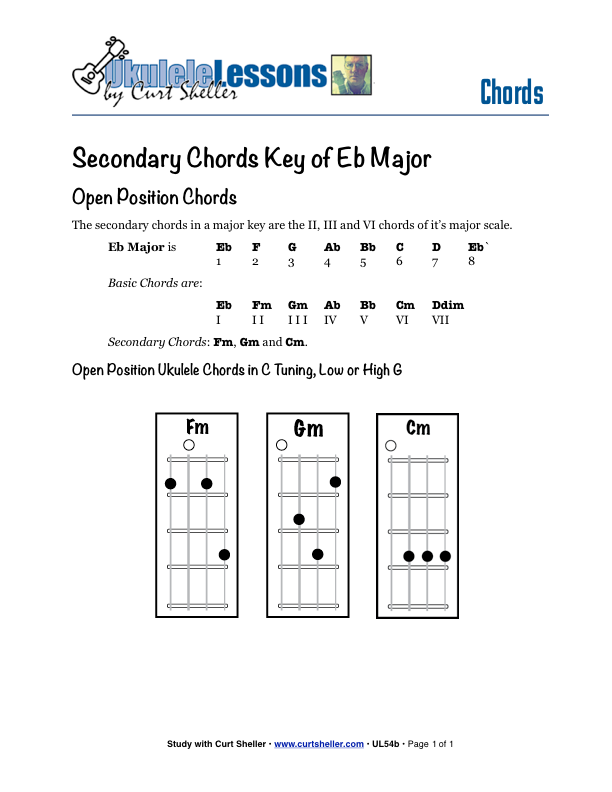
The secondary chords for any major key are the II, III and VI chords of it’s corresponding major scale. For Eb Major, the secondary chords are: Fm, Gm and Cm. From the primary and secondary chords of a major key, countless songs and chords progressions can be played.

The secondary chords for any major key are the II, III and VI chords of it's corresponding major scale. For Ab Major, the secondary chords are: Bbm, Cm and Fm. From the primary and secondary chords of a major key, countless songs and chords progressions can be played.

The secondary chords for any major key are the II, III and VI chords of it's corresponding major scale. For Db Major, the secondary chords are: Ebm, Fm and Bm. From the primary and secondary chords of a major key, countless songs and chords progressions can be played.

The secondary chords for any major key are the II, III and VI chords of it's corresponding major scale. For Gb Major, the secondary chords are: Abm, Abm and Ebm. From the primary and secondary chords of a major key, countless songs and chords progressions can be played.

The secondary chords for any major key are the II, III and VI chords of it's corresponding major scale. For Cb Major, the secondary chords are: Dbm, Ebm and Abm. From the primary and secondary chords of a major key, countless songs and chords progressions can be played.
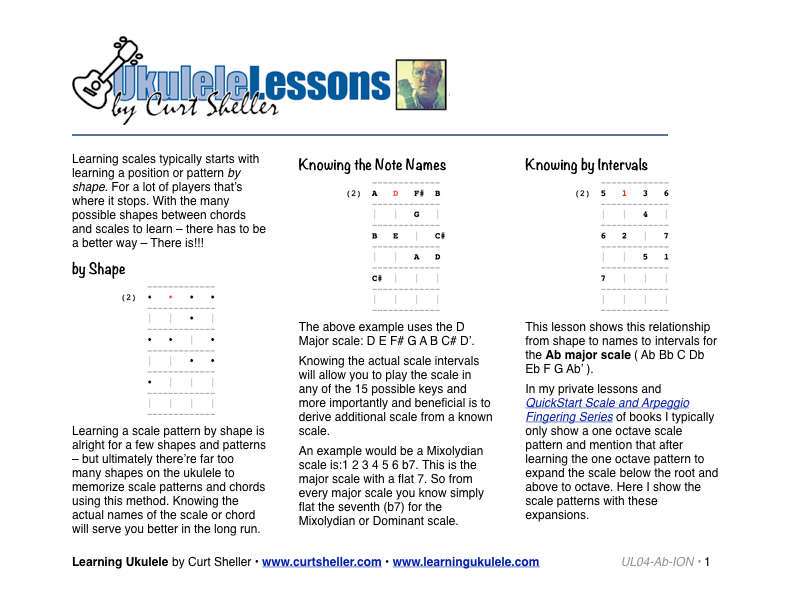
Essential Ab Major scale patterns for ukulele. Learning scales typically starts with learning a position or pattern by shape. For a lot of players that's where it stops. With the many possible shapes between chords and scales to learn - there has to be a better way - There is!!!
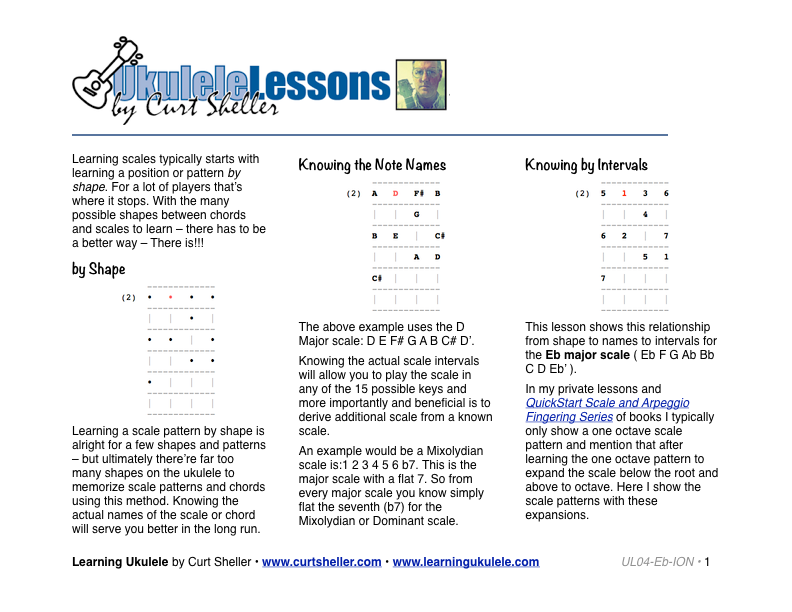
Essential Eb Major scale patterns for ukulele. Learning scales typically starts with learning a position or pattern by shape. For a lot of players that's where it stops. With the many possible shapes between chords and scales to learn - there has to be a better way - There is!!!
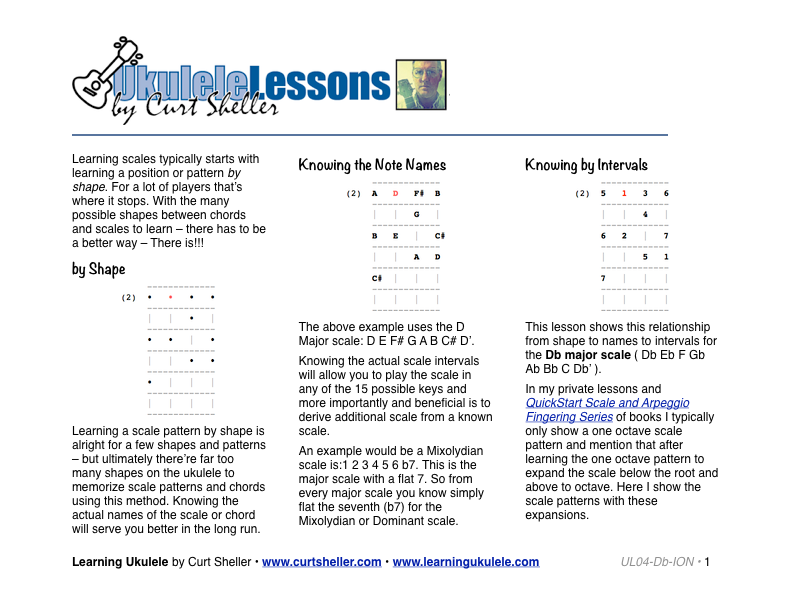
Essential DbMajor scale patterns for ukulele. Learning scales typically starts with learning a position or pattern by shape. For a lot of players that's where it stops. With the many possible shapes between chords and scales to learn – there has to be a better way – There is!!!
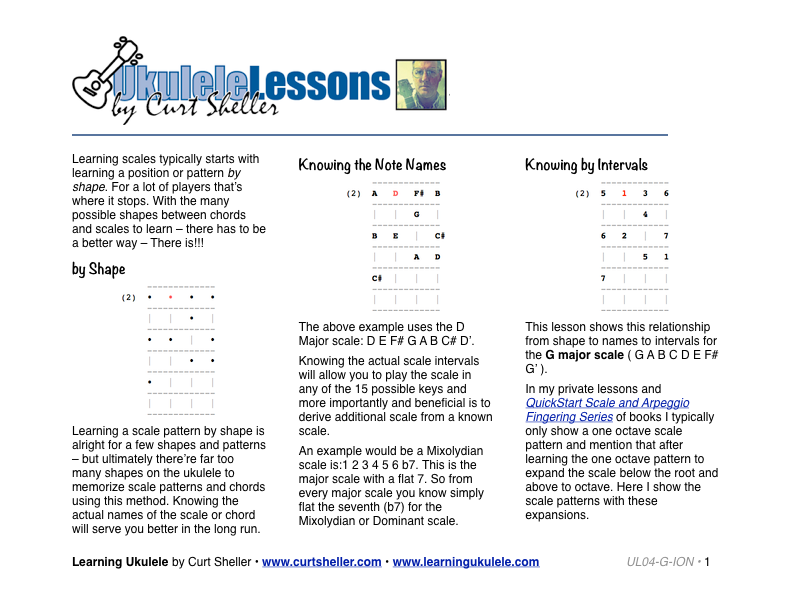
Essential G Major scale patterns for ukulele. Learning scales typically starts with learning a position or pattern by shape. For a lot of players that's where it stops. With the many possible shapes between chords and scales to learn - there has to be a better way - There is!!!
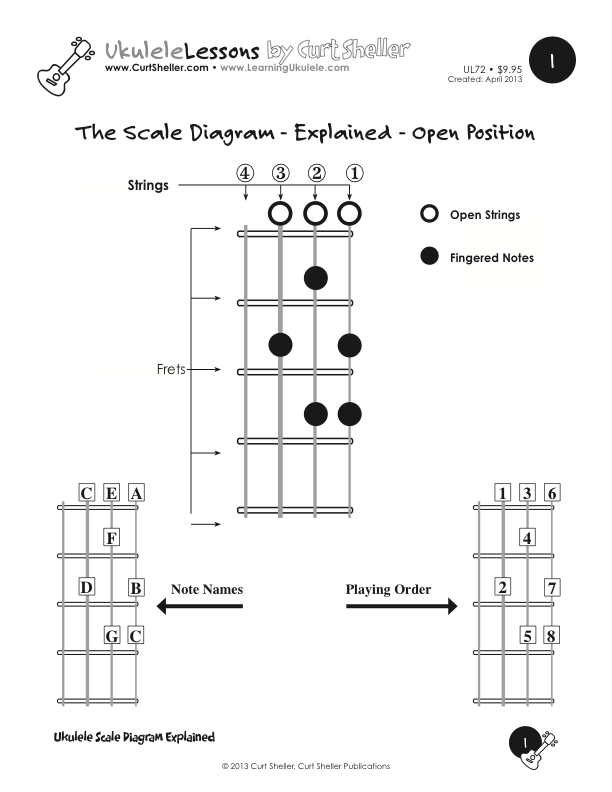
The "Ukulele Scale Diagram" is an alternate notation and visual why of showing a scale using a grid pattern representing the strings and frets of the Ukulele Fingerboard.
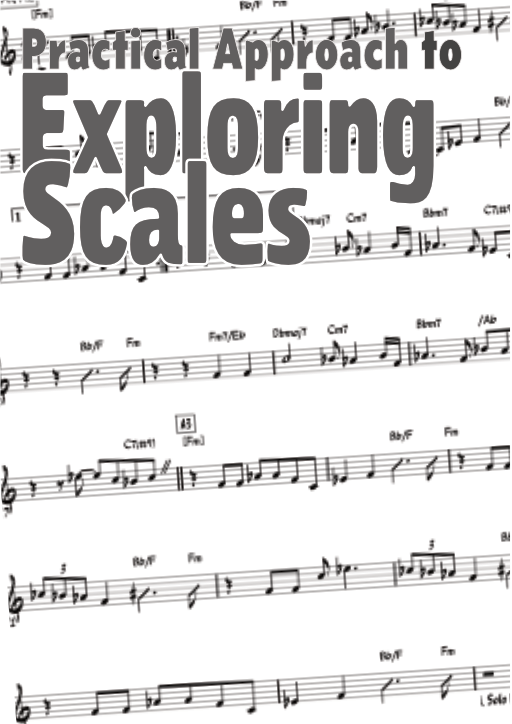
On ukulele there aren't many positions where you can play a one octave scale from the root to octave. An instrument like the guitar with the additional lower strings five and six allows one to play a one octave scale in multiple positions in the basic 4-fret, 4-finger position. On ukulele there might be one or two depending on the scale and the key - and whether your using a low string four tuning. This lesson offers a practical approach to practicing your scales on ukulele.
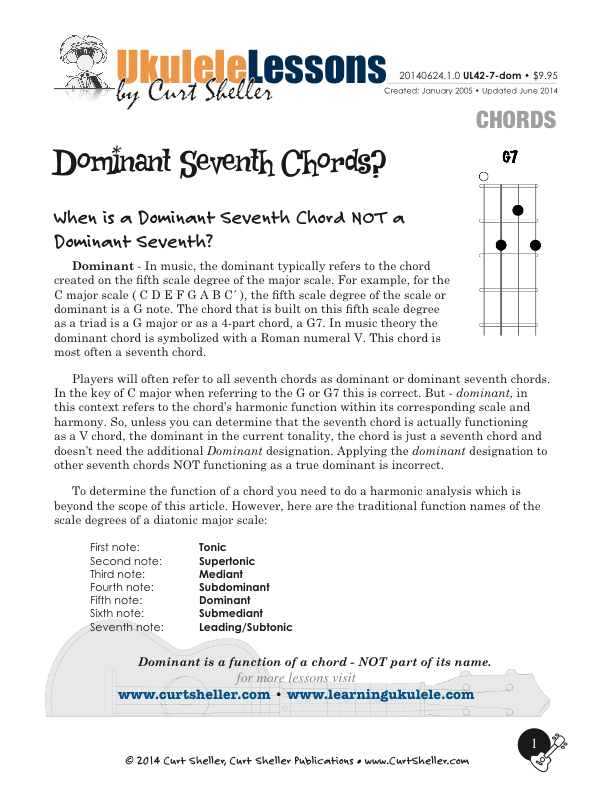
Not all seventh chords are actually "dominant" seventh chords. This lesson covers when is a Dominant Seventh Chord NOT truly a Dominant seventh?
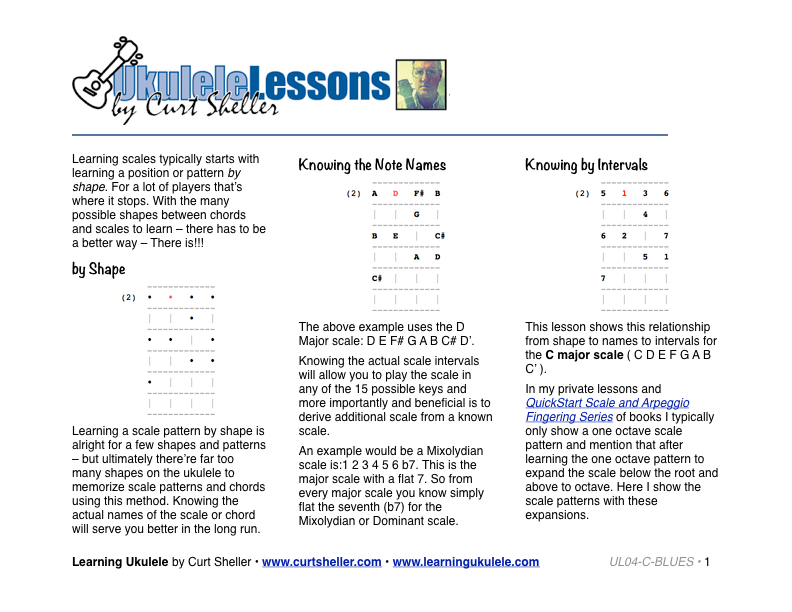
Essential C Blues/Minor Pentatonic scale patterns for ukulele.
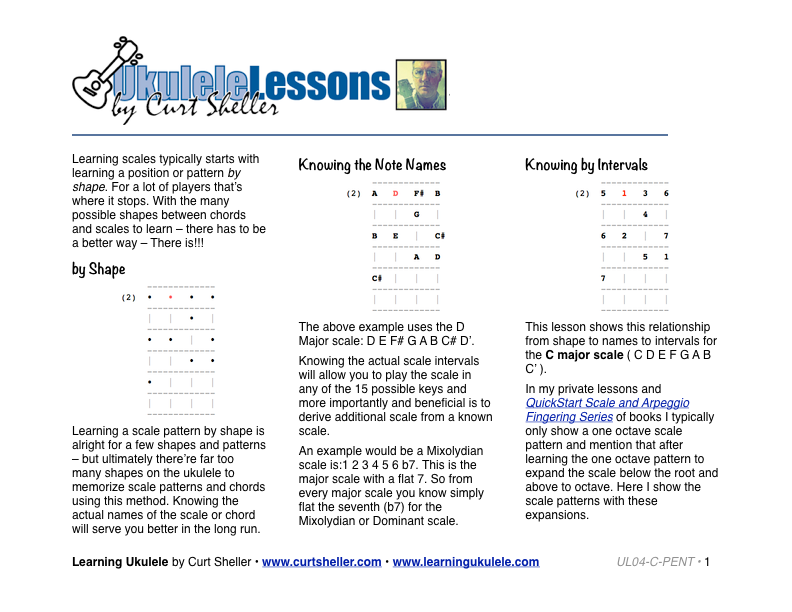
Essential C Pentatonic or Major Pentatonic scale patterns for ukulele. Learning scales typically starts with learning a position or pattern by shape. For a lot of players that's where it stops. With the many possible shapes between chords and scales to learn - there has to be a better way - There is!!!
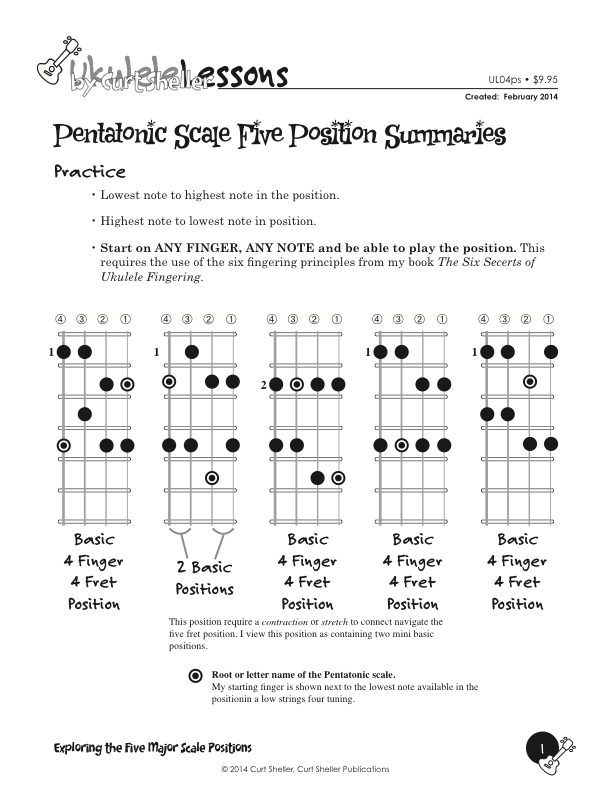
The five pentatonic scale positions - a summary. This is the first steps for most players in learning the pentatonic scales in various positions on the neck.
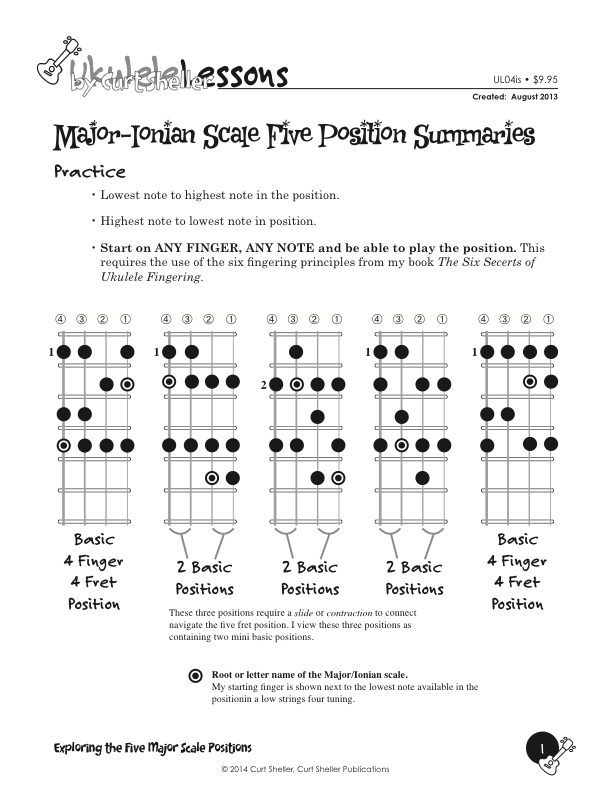
The five "Major/Ionian" scale positions — a summary. The five basic positions are simply the expansion above and below the root and octave of the one octave scale fingerings using the notes that are available in that position. This lesson explores that on the lowest note of the position with every finger.
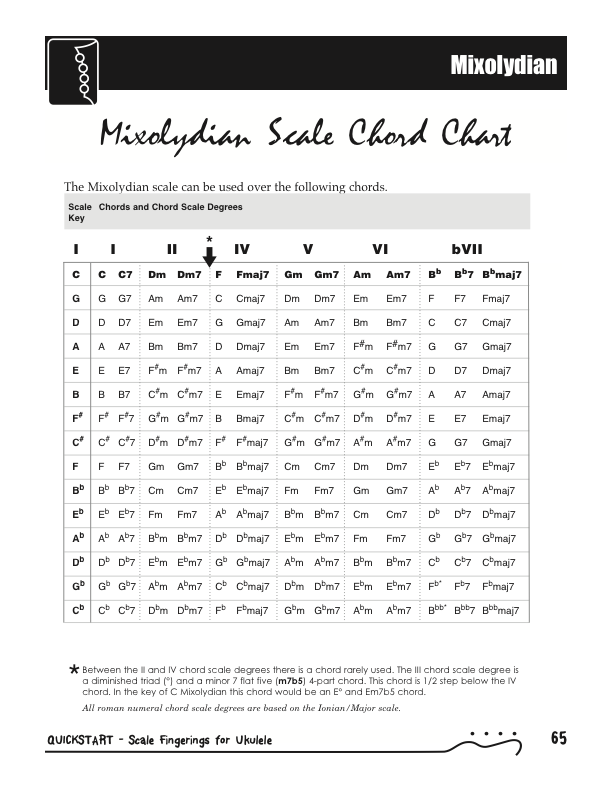
The "Mixolydian/Dominant" scale is one of the six essential scales that every ukulele player should know. Here are the chords for all 15 Mixolydian/Dominant scales.

The Minor tetrachord is the 1 2 b3 4 of a Aeolian (Natural Minor) scale.
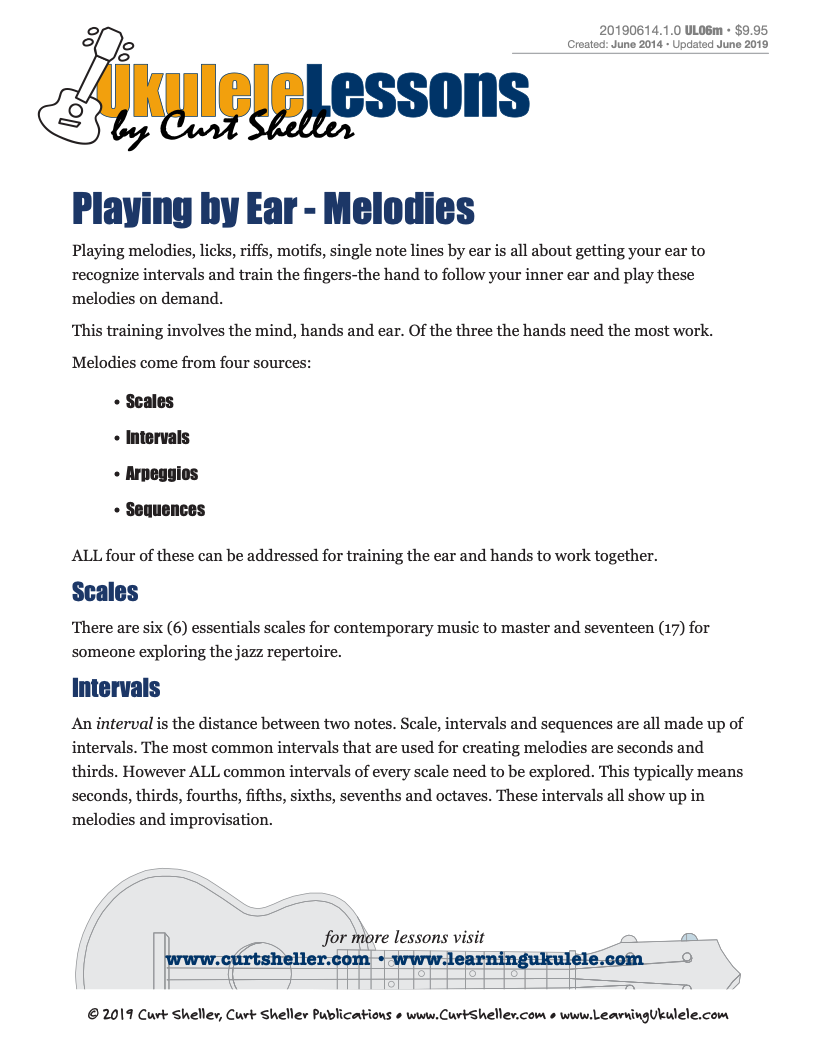
Playing Melodies, Licks, Riffs, Motifs, and Single Note Lines by ear is all about getting your ear to recognize intervals and train the fingers to follow your inner ear and play these melodies on demand.

A "Secondary Dominant" chord is defined as any seventh chord built on a scale root that is diatonic to the key that resolves up a perfect fourth or down a perfect fifth to a full diatonic chord. These chords function as a dominant (V) chord to the next chord, serving to temporarily tonicize the following chord.

A metronome is a device that produces an audible click or other sound at a regular interval that can be set by the user, typically in beats per minute (bpm).
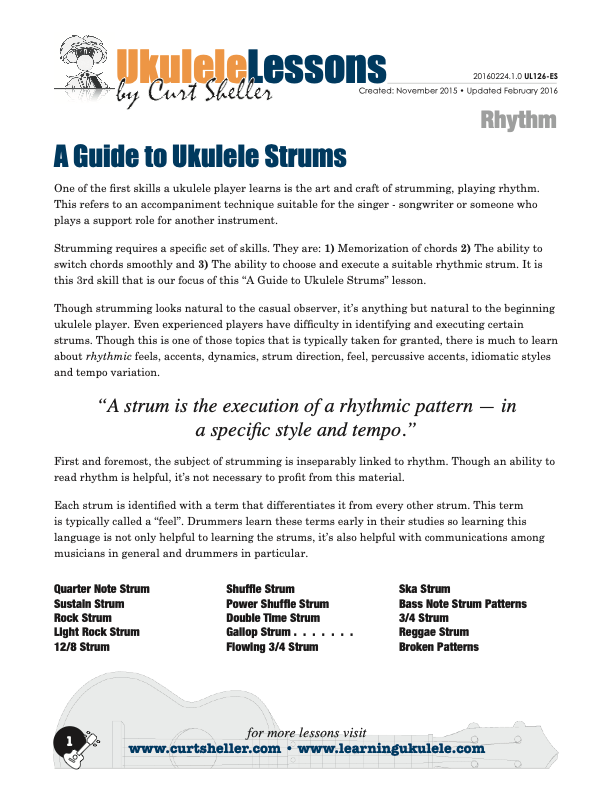
One of the first skills a ukulele player learns is the art and craft of strumming, playing rhythm. This refers to an accompaniment technique suitable for the singer - songwriter or someone who plays a support role for another instrument.
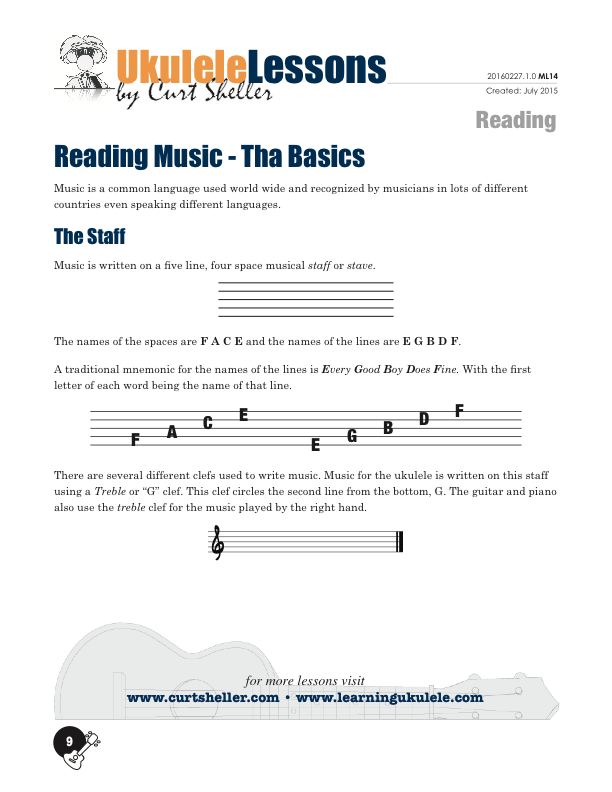
Music is a common language used world wide and recognized by musicians in lots of different countries even speaking different languages. This lesson gives a basic understanding on how to read a lead shot, song sheet, chord chart, etc...

If there is one area of discussion that players recommendations are all over the board on - it's fingernails for classical guitar. The technique and subject for classica guitar is appropriate for ukulele as well. The ukulele is almost a mini classical guitar missing two strings.

Playing chords, chord progressions, and songs by ear is all about getting your ear to recognize the sound of chords and chord progressions and just like melodies, train the fingers and the hand to follow your inner ear and play these chords, chord progressions, and songs on demand.



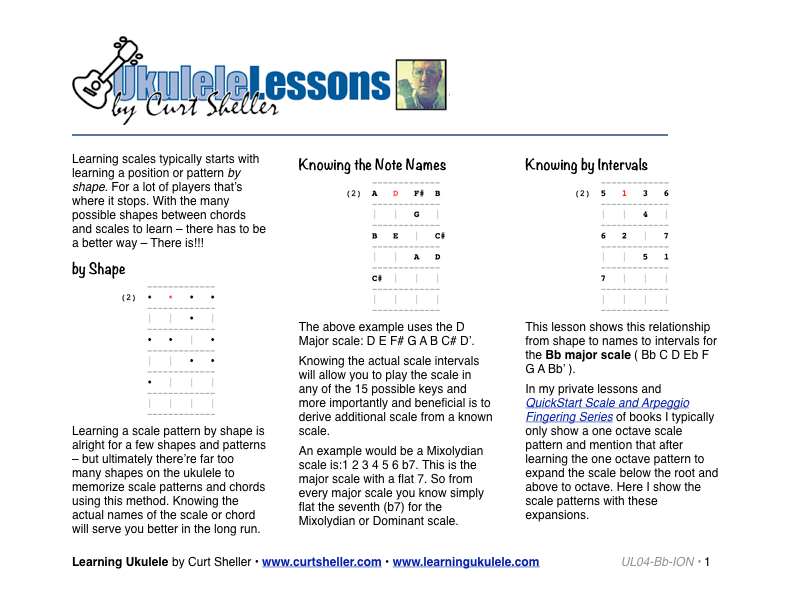
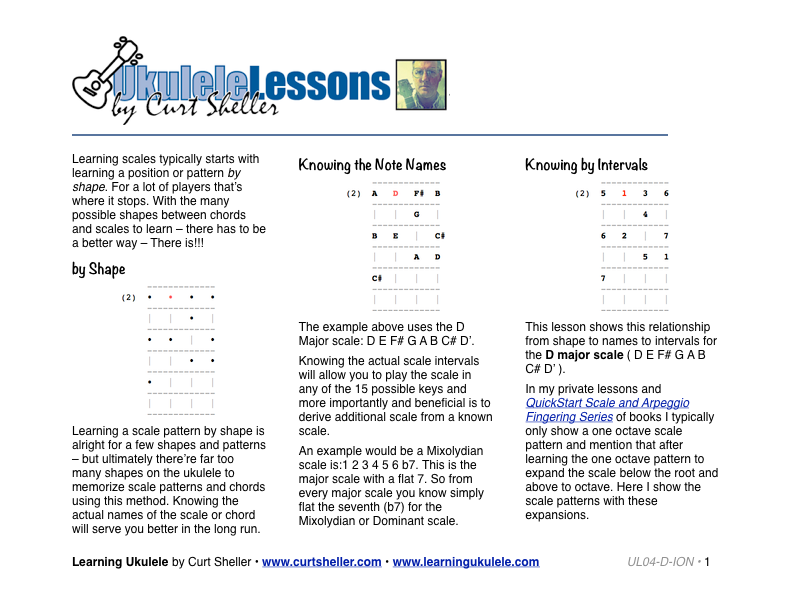
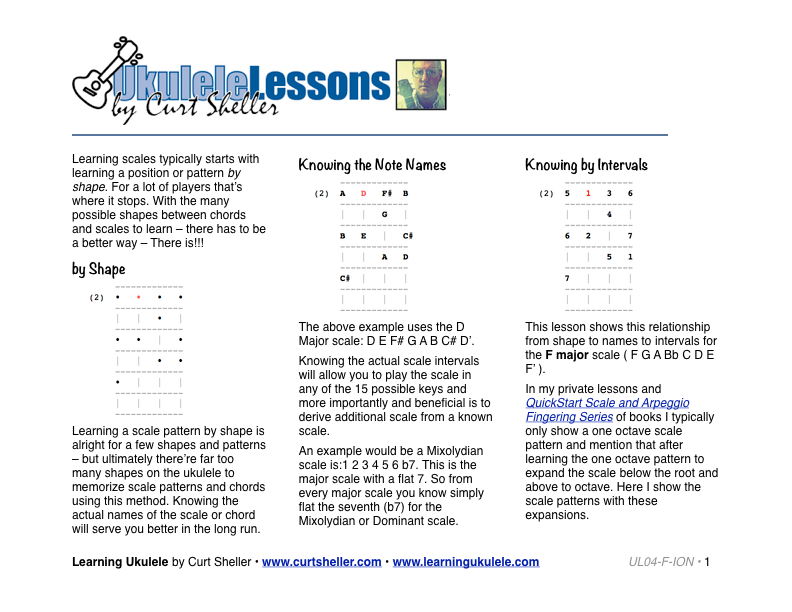

.jpg)